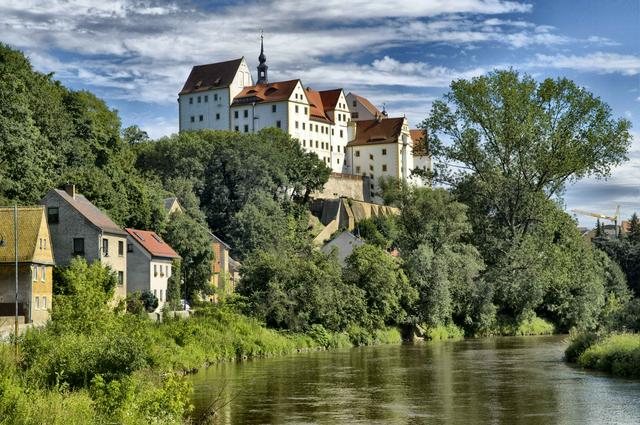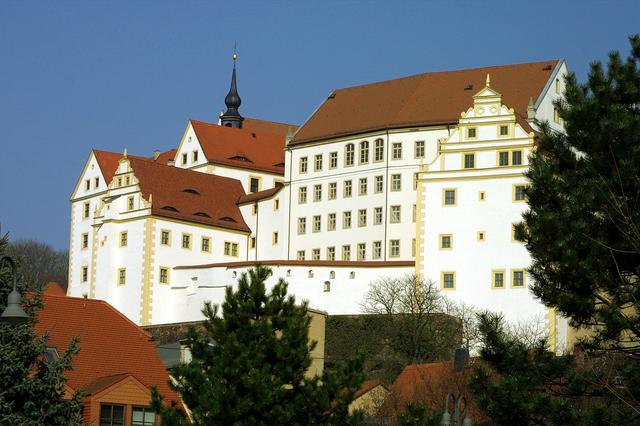Colditz is a country town in the state of Saxony in Germany. It is widely known for its medieval castle, which served as a prisoner-of-war camp for Allied officers during World War II.
 Colditz is situated in the state of Saxony about 40 km southeast of the city of Leipzig in the valley of the Zwickauer Mulde shortly before its merge with the Freiberger Mulde.
Colditz is situated in the state of Saxony about 40 km southeast of the city of Leipzig in the valley of the Zwickauer Mulde shortly before its merge with the Freiberger Mulde.

- Colditz Castle. Huge, 1000-year-old hilltop castle displaying artifacts from its famed role as a WWII POW camp. Widely unknown among Germans, it is surprisingly popular with visitors from the United Kingdom. Originating from the 11th century, the castle was completely redesigned and rebuilt in Renaissance style around 1500. The famous painter Lucas Cranach senior worked here. Saxon monarchs used it as a hunting château. During the 19th century it was converted into a labour camp and later a mental institution. The Nazis used it as a concentration camp for political enemies and then, during World War 2, as a prisoners-of-war camp named Oflag IV C, mostly holding high-ranking Allied officers under relatively humane conditions. The predominantly well-educated inmates took unusually far-reaching liberties, organising sports competitions and cultural performances, and undertook dozens of sometimes highly creative escape attempts (some of them successful). They even built an airworthy glider. Their experiences were popularised by the British post-war film The Colditz Story and the 1970s BBC series Colditz.
- Historical market square.
- Kohlbachtal, Geithainer Str., 04680. Nature Preserve.
- Podelwitz Castle. Renaissance castle on the riverbank.
Colditz Castle. Huge, 1000-year-old hilltop castle displaying artifacts from its famed role as a WWII POW camp. Widely unknown among Germans, it is surprisingly popular with visitors from the United Kingdom. Originating from the 11th century, the castle was completely redesigned and rebuilt in Renaissance style around 1500. The famous painter Lucas Cranach senior worked here. Saxon monarchs used it as a hunting château. During the 19th century it was converted into a labour camp and later a mental institution. The Nazis used it as a concentration camp for political enemies and then, during World War 2, as a prisoners-of-war camp named Oflag IV C, mostly holding high-ranking Allied officers under relatively humane conditions. The predominantly well-educated inmates took unusually far-reaching liberties, organising sports competitions and cultural performances, and undertook dozens of sometimes highly creative escape attempts (some of them successful). They even built an airworthy glider. Their experiences were popularised by the British post-war film The Colditz Story and the 1970s BBC series Colditz.
Historical market square.
Kohlbachtal, Geithainer Str., 04680. Nature Preserve.
Podelwitz Castle. Renaissance castle on the riverbank.
- Istanbul Bistro & Pizzeria, Am Ring 2a, 04680, +49 34381 45319. Takeout.
Istanbul Bistro & Pizzeria, Am Ring 2a, 04680, +49 34381 45319. Takeout.
